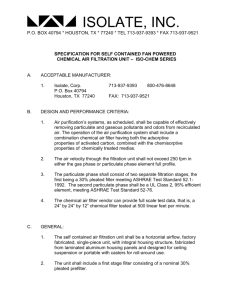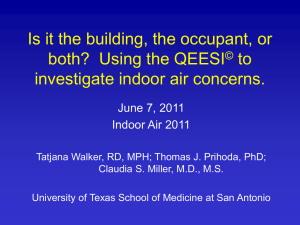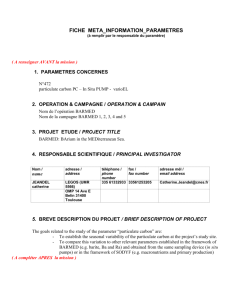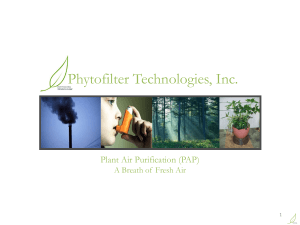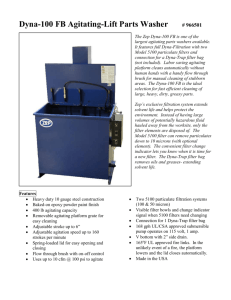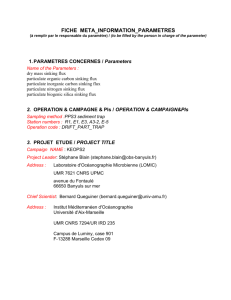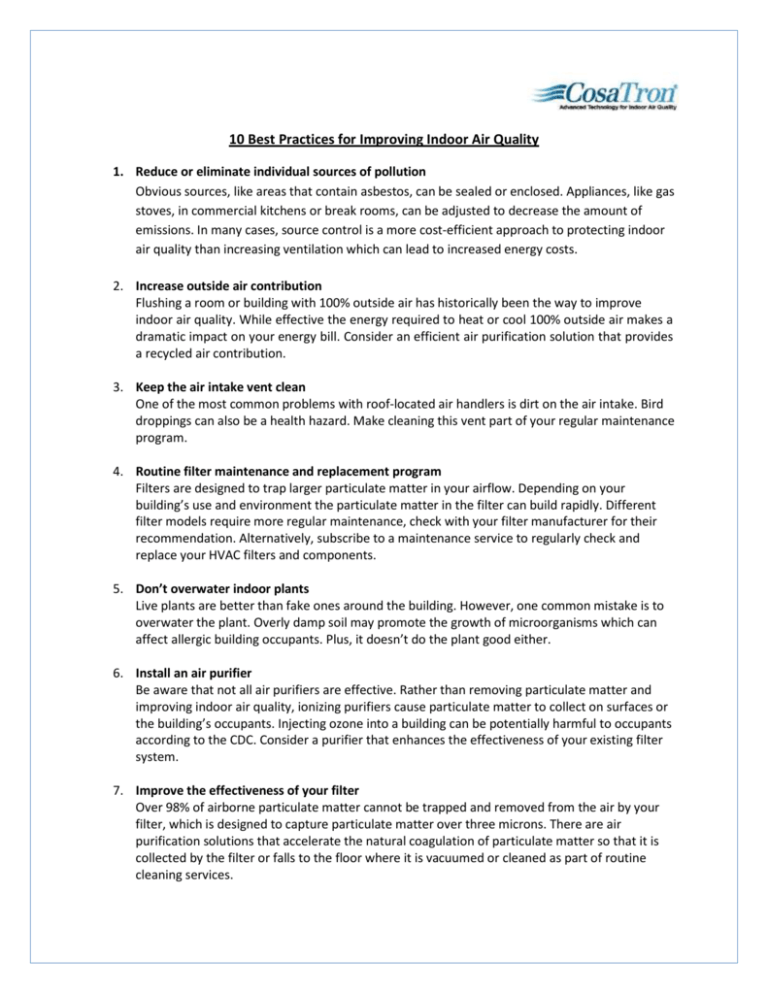
10 Best Practices for Improving Indoor Air Quality
1. Reduce or eliminate individual sources of pollution
Obvious sources, like areas that contain asbestos, can be sealed or enclosed. Appliances, like gas
stoves, in commercial kitchens or break rooms, can be adjusted to decrease the amount of
emissions. In many cases, source control is a more cost-efficient approach to protecting indoor
air quality than increasing ventilation which can lead to increased energy costs.
2. Increase outside air contribution
Flushing a room or building with 100% outside air has historically been the way to improve
indoor air quality. While effective the energy required to heat or cool 100% outside air makes a
dramatic impact on your energy bill. Consider an efficient air purification solution that provides
a recycled air contribution.
3. Keep the air intake vent clean
One of the most common problems with roof-located air handlers is dirt on the air intake. Bird
droppings can also be a health hazard. Make cleaning this vent part of your regular maintenance
program.
4. Routine filter maintenance and replacement program
Filters are designed to trap larger particulate matter in your airflow. Depending on your
building’s use and environment the particulate matter in the filter can build rapidly. Different
filter models require more regular maintenance, check with your filter manufacturer for their
recommendation. Alternatively, subscribe to a maintenance service to regularly check and
replace your HVAC filters and components.
5. Don’t overwater indoor plants
Live plants are better than fake ones around the building. However, one common mistake is to
overwater the plant. Overly damp soil may promote the growth of microorganisms which can
affect allergic building occupants. Plus, it doesn’t do the plant good either.
6. Install an air purifier
Be aware that not all air purifiers are effective. Rather than removing particulate matter and
improving indoor air quality, ionizing purifiers cause particulate matter to collect on surfaces or
the building’s occupants. Injecting ozone into a building can be potentially harmful to occupants
according to the CDC. Consider a purifier that enhances the effectiveness of your existing filter
system.
7. Improve the effectiveness of your filter
Over 98% of airborne particulate matter cannot be trapped and removed from the air by your
filter, which is designed to capture particulate matter over three microns. There are air
purification solutions that accelerate the natural coagulation of particulate matter so that it is
collected by the filter or falls to the floor where it is vacuumed or cleaned as part of routine
cleaning services.
8. Ensure a balanced airflow
Most often comfort issues such as hot and cold areas in the building are the trigger for
investigating the airflow balance. Another systemic effect of airflow balance is excess humidity.
Unbalanced airflow will lead to increased energy costs, create a less clean environment and can
make a building less comfortable for its occupants.
9. Isolate and treat air in specialized areas of the building
Short-term activities can generate high levels of pollutants — for example, painting, paint
stripping, sanding, floor polishing etc in areas of your building can introduce significant
particulate matter. You should also consider replacing or cleaning the filter, if the design
permits, during and immediately following this kind of building maintenance or repair.
10. Renovations or remodels can lead to degradation in indoor air quality
Buildings originally designed for one purpose may end up being converted to use as office space,
manufacturing, support facilities etc. If not properly modified during building renovations, the
room partitions and ventilation systems can contribute to indoor air quality problems by
restricting air recirculation or by unbalancing it.
For more information on improving indoor air quality, contact us:
1.813.886.1717
Info@cosatron.com
www.cosatron.com
Copyright CosaTron® 2012 - All rights reserved


